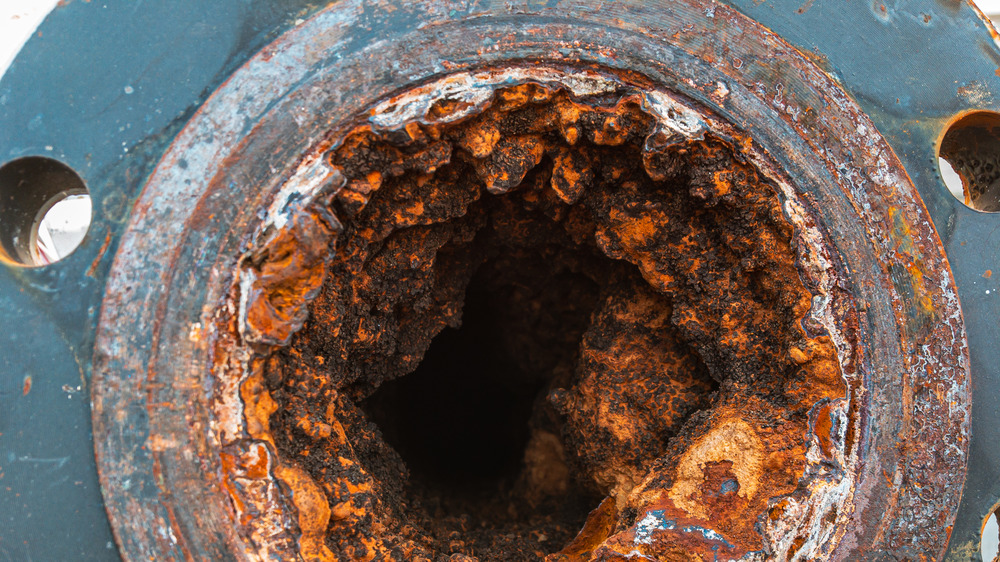What Actually Happens To Your Heart When You Don't Exercise
It's been weeks, maybe months, or — eek! — possibly years since you've broken a sweat exercising. Undoubtedly, you've noticed some effects of being sedentary, particularly the longer you've been inactive: getting easily winded climbing a flight of stairs after just two weeks of inactivity, or noticing a thicker waistline and increased body weight about six weeks after stopping exercise (per Health). And it just gets worse from there.
Those are all easily noticeable effects. But what about the things that are happening invisibly in your body due to lack of exercise? Literally at the heart of the matter is your heart. It's directly affected by a lack of aerobic activity, but even scarier, it may not reveal those effects for quite some time, according to ABC News, and possibly only when a dramatic heart-related event gets your attention in the worst way.
You may know that the number one cause of death in women is heart disease. But if you're in your 20s or 30s, you may not think too much about the risk being sedentary has on your heart. Consider exercise as an investment for later on. For every hour of regular exercise you get, you gain about two hours of additional life, according to Go Red for Women. That's a pretty good deal!
Not exercising increases your risk of heart disease
So what happens to your heart when you're leading a couch potato lifestyle? Since it's a muscle — one that has to be strong to pump blood efficiently throughout the body — it needs to be used regularly or it will weaken and atrophy (per Healthline). Without being strengthened by exercise, it has to strain to keep blood circulating. The constant stress can cause the heart to enlarge, possibly leading to eventual heart failure (per Mayo Clinic).
Inactivity, particularly when paired with a poor diet, also causes plaques to form in the arteries. Plaque is an accumulation of fatty materials and dead white blood cells (sent by the body to try to fight the plaque buildup) and as it deposits on the artery walls, it leaves less space for blood to be pumped through. These plaques may eventually break off into blood clots that can cause a heart attack or stroke.
On top of that, as we age, our arteries lose their elasticity. The stiffer the walls of the arteries, the harder the heart has to work to pump blood throughout the body. The good news, according to one study, is that participating in regular exercise can decrease the rate at which arteries stiffen with age — about 50 percent among the most active participants. Another study showed that three months of consistent aerobic exercise actually reversed arterial stiffening in middle-aged, previously inactive participants.
Heart-healthy effects of exercise
Before you start exercising, see your doctor to make sure you're good to go. The American Heart Association recommends an adult get at least 150 minutes per week of moderate-intensity aerobic activity or 75 minutes per week of vigorous aerobic activity, or a combination of both, preferably spread over seven days. For greater benefits, add a muscle-strengthening activity on at least two days. Regular exercise improves factors related to your heart's health, such as blood pressure, cholesterol levels, and blood sugar regulation (per Harvard Health Publishing). It also makes positive physiological changes in the heart itself, including helping the arteries dilate more easily. Finally, it helps regulate the sympathetic nervous system, which controls heart rate and blood pressure.
If these activity recommendations seem to be too much for you, you'll be happy to know that even one session of exercise — yes one! — may protect your heart through a process called ischemic, or exercise, preconditioning, according to a review published in JAMA Cardiology. The review of numerous animal and human studies concludes that a single bout of exercise induces an immediate protective effect on the heart for two to three hours, and then produces a stronger cardioprotective effect 24 hours later that lasts for several days. Moreover, animal studies suggest that if a heart attack occurs later on, ischemic preconditioning may reduce its damage up to 50 percent. But, hey, if just one exercise session produces such good heart-healthy results, imagine what continued exercise will do. Hint, hint.



